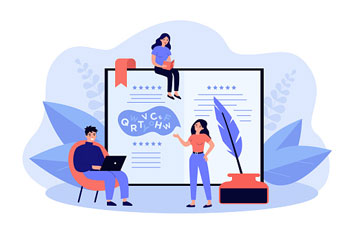If you have a website, you have probably heard of SEO. or search engine optimization. It’s an important part of running your website and improving quality traffic to your pages because every person that visits your webpage is a potential client. Even when a person stops on your webpage but doesn’t buy something, they now know your name.
What is On-Page SEO?

On-page SEO, or on-site SEO, is the practice of optimizing each individual webpage to improve a website’s overall SEO rankings and increase the quality traffic we mentioned. Taking advantage of on-page SEO is important because it helps search engines like Google understand your content. By catering to Google’s many algorithms, you can tell it that you deliver quality content for people interested in your specific niche.
The Best Places to Implement On-Page SEO
Now that you understand that your on-page SEO helps your website’s overall SEO, here are five places to implement it.
- SEO writing, also known as blogging. Writing blogs that keep your customers and ranking on a SERP in mind is a great way to implement your on-page SEO. But don’t think you can just throw some keywords on a page and write a few sentences to fill in the blanks. SEO algorithms place a high value on the quality of your content.
- Be very specific when you’re blogging. Pick one product to focus on, then make sure your blogs are extremely relevant to that product. For example, if you’re talking about luxury dog leashes, curate a super-specific blog. Include the subject in your title tag, URL, image alt text, and mention the product in your content several times.
- Never underestimate the power of your blogging titles. You might think that the body of your blog is the most important part, but you’d be wrong. It’s true that you need quality content. You can’t just list some keywords and call it a day. But your headline needs to pique enough interest that a person actually clicks and spends time on your blog, out of all the other results on a SERP.
- Avoid keyword cannibalization when blogging. It’s a rookie mistake. You might think that the more webpages within your website that mention a profitable keyword, the better. But again, you’d be wrong. In fact, the more webpages that mention the same keyword, the more you are actually competing with yourself. Your keywords are eating each other and damaging your SEO. Hence, keyword cannibalization.
- Include images when blogging. Images are a great way to boost on-page SEO. You increase your ranking opportunities by including the chance to appear in an image search, and you make reading your blogs more enjoyable. But whatever you do, make sure you add images correctly. Some images make your webpage slower to load, and this damages your user experience.

Moose May, On-Page SEO Experts
There are a ton of factors that go into optimizing your website. Blogging, keywords, and images are just a few factors to mention. Moose May specializes in creating quality blogs, curated to a specific niche, and drives clicks and quality traffic to your website.
